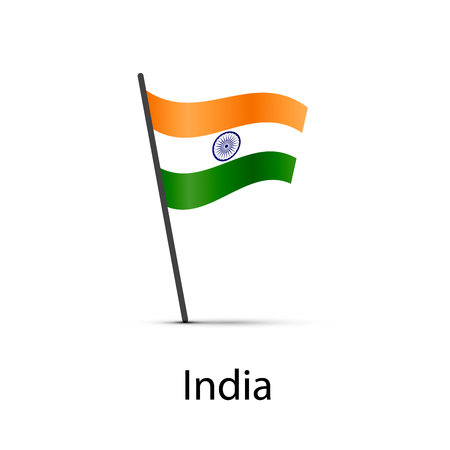Introduction to Migraine in India
Migraine is a significant neurological condition that affects millions of individuals across India, impacting people from various age groups and walks of life. Recent studies suggest that the prevalence of migraine in India is steadily rising, with estimates indicating that nearly one in seven Indians may experience migraine at some point in their lives. This chronic disorder not only leads to severe headaches but also brings about a host of symptoms such as nausea, sensitivity to light and sound, and visual disturbances. The impact on daily life can be profound, affecting productivity at work, academic performance, and personal relationships. Due to the unique cultural, dietary, and environmental factors present in India—such as specific food habits, climate variations, urban stressors, and traditional health practices—it becomes vital to understand the local causes and triggers for migraine. By gaining insight into these Indian-specific factors, individuals can better manage their symptoms, healthcare professionals can offer more tailored advice, and communities can foster greater awareness regarding prevention strategies.
Common Medical and Biological Causes
Migraine is a complex neurological disorder with multiple contributing factors. In India, certain medical and biological causes are particularly relevant due to unique genetic backgrounds, hormonal patterns, and lifestyle elements found in Indian populations. Understanding these underlying causes helps in providing targeted migraine management strategies for Indian patients.
Genetic Predisposition among Indians
Studies indicate that migraine often runs in families, suggesting a strong genetic component. Research among Indian families has shown that children with one or both parents suffering from migraines are more likely to develop the condition themselves. Specific gene variants linked to migraine susceptibility have been identified within South Asian populations, though ongoing research continues to uncover more precise genetic markers.
| Genetic Factor | Prevalence in Indian Population | Impact on Migraine Risk |
|---|---|---|
| Family History of Migraine | Common (20-40% cases) | Increases risk by 2-3 times |
| CACNA1A Gene Variant | Detected in select groups | Linked to familial hemiplegic migraine |
| TRPM8 Gene Variant | Observed in North India | Associated with cold-induced migraines |
Hormonal Changes Influencing Migraine in India
Migraine prevalence is notably higher among women in India, especially during their reproductive years. Hormonal fluctuations—particularly those involving estrogen and progesterone—play a significant role. Many Indian women report increased migraine frequency during menstruation, pregnancy, or menopause. The use of oral contraceptives and hormone replacement therapy can also influence migraine patterns.
Common Scenarios of Hormonal Triggers:
- Menstrual Migraines: Commonly reported by Indian women aged 15-45 years.
- Pregnancy: Some experience improvement, while others report worsening migraines, especially in the first trimester.
- Menopause: Fluctuating hormones can trigger new onset or worsen existing migraines.
- Oral Contraceptive Pills: Can either improve or exacerbate migraine symptoms based on individual response.
Neurological Factors Seen in Indian Populations
Migraine involves abnormal brain activity affecting nerve pathways and chemicals. In the Indian context, specific neurological triggers such as sleep deprivation due to long working hours, exposure to extreme heat, and high stress levels (especially in urban settings) are common contributors. Electrolyte imbalances during summer months, irregular meal timings during fasting periods (such as Navratri or Ramadan), and persistent screen exposure are additional neurological stressors that increase susceptibility to migraine attacks.
Summary Table: Key Biological Causes of Migraine in India
| Cause Type | Description | Cultural Relevance in India |
|---|---|---|
| Genetic Predisposition | Migraines inherited from family members due to specific gene variants. | High prevalence due to close-knit family structures and hereditary trends. |
| Hormonal Changes | Migraines triggered by changes in estrogen/progesterone levels. | Affects many women due to menstrual cycles, pregnancy, and menopause; social taboos may limit discussion. |
| Neurological Factors | Nerve pathway disruptions influenced by external triggers. | Affected by lifestyle habits like fasting, heat exposure, and prolonged work hours common across India. |

3. Dietary Triggers Specific to Indian Cuisine
Migraine sufferers in India often encounter unique dietary triggers linked to the diverse and flavourful Indian cuisine. The use of various spices, food additives, and preparation methods can influence migraine occurrence. Below is an analysis of common Indian foods and ingredients that are known to trigger migraines in sensitive individuals.
Spices and Condiments
Indian cooking is renowned for its rich use of spices like red chilli powder, black pepper, mustard seeds, and garam masala. While these enhance taste, they may act as irritants for some people prone to migraines. Spicy foods can cause dilation of blood vessels or gastric irritation, which can precipitate headaches in susceptible individuals.
Caffeine Consumption
Tea (chai) and coffee are integral parts of daily life in many Indian households. Both contain caffeine, which in moderate amounts may relieve headaches but can also trigger migraines if consumed excessively or suddenly withdrawn. Energy drinks and soft drinks containing caffeine are becoming increasingly popular among urban youth, further raising exposure levels.
Monosodium Glutamate (MSG)
MSG, commonly referred to as “Ajinomoto” in India, is used to enhance flavour in restaurant dishes and packaged snacks. Several studies have reported MSG as a potential migraine trigger, causing headaches within hours of consumption in sensitive individuals. Awareness about MSG content in fast food and processed items is crucial for those managing migraines.
Fermented and Aged Foods
Fermented foods such as dosa batter, idli, dhokla, pickles (achaar), and certain cheeses contain high levels of tyramine—a compound associated with triggering migraines. These foods are staples in many regional diets across India. For some people, regular consumption may increase the frequency or severity of migraine attacks.
Traditional Sweets and Preserved Foods
Popular Indian sweets like jalebi, rasgulla, and mithai often contain artificial colours and preservatives that can act as chemical triggers for migraines. Additionally, packaged snacks frequently include additives such as sodium benzoate and sulphites.
Practical Dietary Guidance
Understanding individual food sensitivities is essential for effective migraine management. Keeping a food diary can help identify specific triggers related to Indian cuisine. Consulting with a healthcare provider or dietitian familiar with Indian eating patterns is recommended to develop a personalised plan that minimises migraine risk while respecting cultural preferences.
4. Lifestyle and Environmental Factors
Migraine triggers in India are often closely related to lifestyle habits and environmental conditions unique to the region. Understanding these factors can help individuals identify patterns and manage their migraine risks more effectively.
Irregular Meal Times and Fasting
In India, cultural practices such as fasting during religious festivals (e.g., Navratri, Ramadan) or skipping meals due to busy schedules are common. Both irregular meal times and prolonged fasting can trigger migraines by causing fluctuations in blood sugar levels.
| Lifestyle Habit | Common Example in India | Potential Migraine Impact |
|---|---|---|
| Irregular meal times | Skipping breakfast due to early office hours or school runs | Increased risk of headache onset due to hypoglycemia |
| Fasting | Religious fasts (e.g., Ekadashi, Ramadan, Karva Chauth) | Triggering migraines from dehydration or low energy intake |
High-Stress Urban Living
The fast-paced life in Indian metros such as Mumbai, Delhi, and Bengaluru exposes residents to chronic stressors—long commutes, heavy workloads, financial pressures, and limited leisure time. This high-stress environment activates neurological pathways that can precipitate migraine attacks.
Urban Stress Factors Influencing Migraines:
- Traffic congestion and noise pollution leading to mental fatigue
- Lack of work-life balance increasing psychological stress
- Insufficient sleep due to shift work or late-night social activities
Environmental Triggers: Weather and Pollution
Migraines in India are also influenced by climatic variations and environmental pollutants. Sudden changes in temperature—especially during monsoon transitions or peak summer heatwaves—can provoke headaches. Additionally, high levels of air pollution in cities like Delhi and Kolkata introduce irritants that may exacerbate symptoms.
| Environmental Trigger | Indian Context Example | Migraine Effect |
|---|---|---|
| Weather changes | Hot summers, humid monsoons, abrupt cold spells in North India | Migraine frequency often increases with sudden shifts in climate |
| Air pollution | High PM2.5 levels during Diwali or winter smog episodes | Irritation of respiratory passages triggering migraines in sensitive individuals |
| Noise pollution | Loud traffic, construction sites, festive celebrations with firecrackers and music systems | Sensory overload acting as a migraine precipitant for some people |
Cultural Awareness for Prevention:
Migraines are best managed through an awareness of these lifestyle and environmental triggers specific to Indian settings. Adopting regular meal patterns, managing stress through yoga or meditation, using protective masks during high-pollution days, and seeking quiet environments when possible can all contribute to reducing migraine frequency among Indians.
5. Cultural and Social Contributors
In the Indian context, cultural and social events play a significant role in daily life and can be important contributors to migraine onset. Festivals like Diwali, Holi, Eid, and Christmas are celebrated with much enthusiasm, often involving late-night gatherings, loud music, bright lights, and indulgence in rich foods—all of which can act as migraine triggers. Similarly, the wedding season in India is known for its elaborate ceremonies that can last several days, disturbing sleep routines and increasing physical and emotional stress. Extended family gatherings, which are common across different regions in India, also impact regular meal timings and sleep schedules due to the hospitality culture of serving guests and participating in long conversations or activities late into the night.
Impact on Sleep Patterns
Sleep disruption is one of the most recognized triggers for migraines. During festivals or family events, it is quite common for individuals to stay awake till late at night or wake up earlier than usual for rituals and preparations. This change in circadian rhythm can make people more susceptible to migraine attacks, especially if they already have a history of headaches.
Dietary Influences During Social Occasions
Traditional Indian sweets, oily snacks, and spicy dishes are frequently consumed during cultural celebrations. While these foods are integral to Indian hospitality, they may contain ingredients like monosodium glutamate (MSG), artificial colors, or excessive sugar and salt—known triggers for some people with migraine. Skipping meals due to busy schedules during functions can further increase vulnerability.
Loud Noises and Bright Lights
The use of crackers during Diwali, loud DJ music at weddings, and decorative lighting can all contribute to sensory overload. For many migraine sufferers in India, such environmental factors exacerbate symptoms or even precipitate an attack.
Emotional Stress from Social Obligations
Indian culture places a strong emphasis on social interaction and fulfilling family expectations. The pressure to attend multiple events or manage large gatherings at home can lead to emotional stress—another well-established migraine trigger.
In summary, understanding these unique cultural and social contributors within the Indian lifestyle is crucial for effective migraine management. Awareness about maintaining regular sleep patterns, balanced diet choices during festivities, minimizing exposure to loud sounds and bright lights, and managing stress can help reduce the frequency of migraines among Indians who participate actively in their rich traditions.
6. Popular Myths and Misconceptions
Migraine is a widely misunderstood health issue in India, with several myths and misconceptions influencing how people perceive and manage the condition. Addressing these beliefs is essential for proper migraine care and prevention.
Myth 1: Migraine Is Just a Bad Headache
Many Indians believe that migraine is simply a severe headache. In reality, migraine is a complex neurological disorder with symptoms like nausea, vomiting, sensitivity to light and sound, and visual disturbances. Recognising it as more than just a headache can encourage timely medical intervention.
Myth 2: Only Adults Suffer from Migraines
A common misconception is that migraines only affect adults. However, children and adolescents in India are also susceptible, often experiencing different symptoms such as abdominal pain or mood changes instead of classic headaches.
Myth 3: Spicy Food Causes Migraines in Every Indian
While certain foods can trigger migraines, there is no scientific evidence that spicy food universally causes migraines among Indians. Triggers vary individually; for some, it could be processed foods or irregular meal timings rather than traditional spices.
Myth 4: Migraines Are Caused by Weakness or Nazar Lagna
Cultural beliefs sometimes attribute migraines to weakness or the evil eye (nazar lagna). While stress and fatigue can act as triggers, migraines are not caused by supernatural forces or general body weakness but have identifiable biological and lifestyle-related causes.
Myth 5: Painkillers Are the Only Solution
In many Indian households, over-the-counter painkillers are the first and only line of treatment. However, long-term reliance on painkillers can worsen headaches (medication-overuse headaches). Effective migraine management includes identifying personal triggers, lifestyle changes, stress management techniques like yoga or meditation, and consulting a healthcare professional for tailored treatments.
Clarifying Misinformation for Better Health
Understanding the reality behind these myths empowers individuals and families to seek appropriate care. By spreading accurate information about migraine causes and triggers—rooted in Indian lifestyles—we can reduce stigma and improve quality of life for sufferers across the country.
7. Practical Prevention and Management Tips
Lifestyle Modifications for Indian Context
Managing migraine in India requires attention to daily habits and environmental factors unique to the region. Prioritise a regular sleep schedule, as late-night television, irregular work hours, or long commutes can disrupt natural rhythms. Practice stress management through yoga, pranayama, or meditation—traditional Indian methods that are proven effective for many people. Limit exposure to loud noise and harsh sunlight by wearing sunglasses or using a scarf (dupatta) when outdoors.
Dietary Guidance Rooted in Indian Traditions
Indian diets are rich in spices and diverse ingredients; however, some common foods may trigger migraines. Limit consumption of processed snacks, deep-fried items like samosas and pakoras, and foods high in MSG such as certain packaged masalas. Stay hydrated with nimbu pani (lemon water) or coconut water instead of caffeinated drinks or sugary sodas. Include magnesium-rich foods like spinach (palak), pumpkin seeds, and bananas in daily meals. Avoid skipping meals, especially during fasting festivals—plan ahead with light, nutritious options like poha or idli to maintain steady blood sugar.
When to Seek Medical Help
If headaches become frequent, severe, or are accompanied by symptoms like vision changes, vomiting, or weakness, consult a qualified doctor without delay. In India, seek out neurologists familiar with migraine care at major hospitals or multispeciality clinics. Home remedies like herbal teas or head massages may provide temporary relief but should not replace medical advice if symptoms persist.
Culturally Sensitive Support Systems
In Indian families, support from elders and community can make a difference in managing chronic conditions like migraine. Share your triggers with loved ones so they can help reduce household stressors—such as excessive noise during celebrations or bright decorative lighting during festivals. Encourage open conversations about mental health to destigmatize seeking professional help.
Summary
Migraine prevention and management in India involves a blend of modern medicine and culturally relevant lifestyle adjustments. Adopting mindful dietary choices, traditional stress-relief practices, and timely medical consultations can significantly improve quality of life for those affected by migraine across the country.


